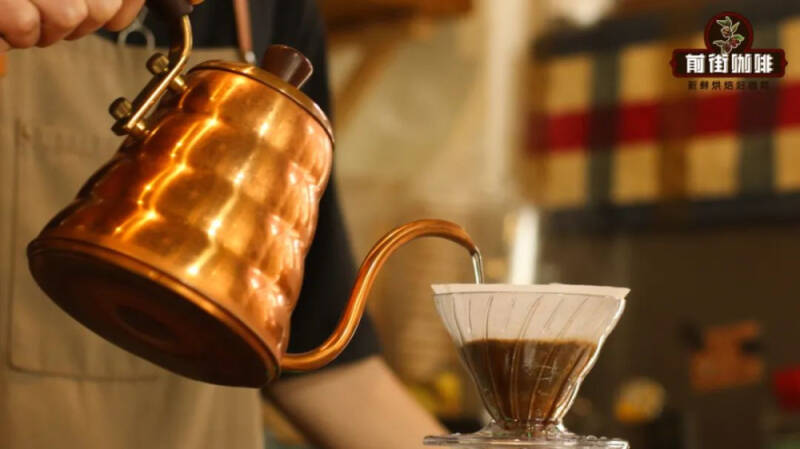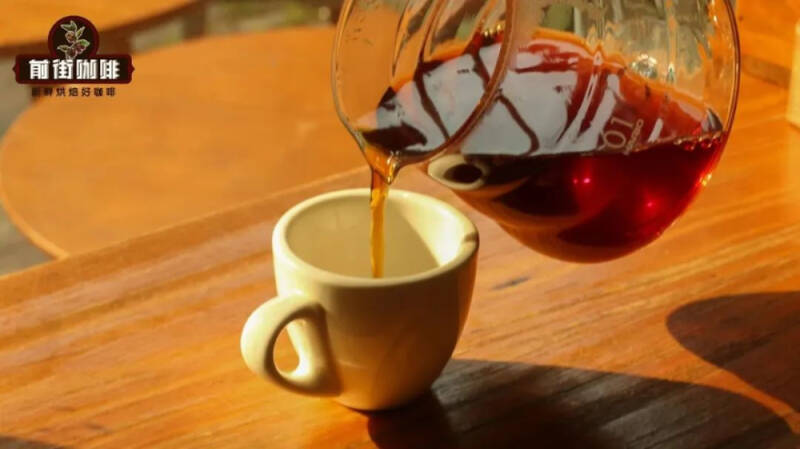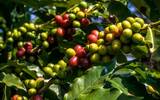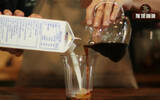How to make delicious hand coffee with 80 °C water? What is the effect of water temperature on hand-brewed coffee?
When we use coffee beans with different roasting degrees to make hand brewing, they all have a corresponding suitable water temperature. For example, as Qianjie Coffee often says, the recommended brewing water temperature for lightly roasted coffee beans is about 92 °C (±1 °C). For deep-roasted coffee beans, it is recommended that the brewing water temperature is about 88 °C (±1 °C).

Because only with the appropriate water temperature can the soluble substances in the coffee be reasonably extracted in the simplest way! When the water temperature is too low, its extraction efficiency will decrease, which will cause you to fail to fully extract the soluble matter from the coffee, giving the whole cup of coffee an indescribable negative taste, even when the water temperature is too high. When the water temperature reaches a certain height, its extraction strength will be very strong, which will easily extract the bitter substance from the coffee, which will make your cup of coffee bitter and difficult to swallow. Therefore, the grinding of coffee beans is not the only problem that people need to solve when making coffee outside, and so is the temperature of the water! But in many cases, the only equipment that can boil water in the school or office is the water dispenser, which has a hot water temperature of about 85 °C. what is the feeling of coffee brewed with 85 °C hot water?
Yes, it is easy to have an obvious sense of astringency! Mainly for light-roasted coffee beans, the water temperature of 85 °C is difficult for them to get complete extraction, which leads to a great increase in the proportion of chlorogenic acid in the whole cup of coffee, which makes the coffee feel astringent. However, we should know that it is not because the low water temperature causes more chlorogenic acid, but because the low water temperature causes insufficient extraction of coffee substances, and the sweet and bitter substances that could have masked the astringency of chlorogenic acid in the whole cup of coffee are greatly reduced. this gives chlorogenic acid a chance to perform!

Therefore, it is difficult to use the hot water from the water cooler to make a cup of coffee with excellent flavor. Well, since it is difficult to make coffee with all the good flavors, then we can choose the second best, as long as it tastes good and tastes good, and it is not astringent. Don't tell me, you can do it! Although the water temperature has become fixed, we can adjust it in other ways. As long as we increase the extraction rate in other places, we can correct some of the negative effects of low water temperature. It should be noted that although it will not taste as good as the coffee made with the recommended water temperature, it still tastes good.
What parameters need to be adjusted? Fine grinding: because of the lack of water temperature, the extraction efficiency of hot water infiltrating into the beans has become much worse, so we need to fine the grinding to increase the surface area that coffee particles can touch, so that hot water can better extract aromatic substances! Add stirring: of course, fine grinding is not enough. Due to the existence of fine powder, we can not grind too fine, otherwise it will cause blockage, resulting in the extraction time is too long and there is a taste of extraction! Therefore, we also need to add the action of stirring in the brewing technique, through artificial initiative, forcibly "stir" the substance in the coffee, so as to increase the efficiency of extraction!
In the brewing experiment, then, let's share with Qianjie Coffee how to use more than 80 degrees of hot water to extract a cup of coffee that tastes good. The beans used in the front street coffee in this experiment are Sidamo's Sakui 7.0. The lightly roasted beans can better reflect the results of this experiment. After all, there is a big gap between their recommended water temperature (92 °C) and the experimental water temperature (85 °C). Amount of beans used: 15g grinding scale: 9 scale of Ek43 (originally 10 scale), 75% overscreening rate of No. 20 sieve (the standard is 65% of sieve 20). Powder to water ratio: 1:15 (225ml hot water) water temperature: 85 °C cooking method: three-stage use of filter cup: V60 first of all, we still use twice the amount of water (30ml) for steaming! When the steaming is over, we use a larger flow of water around the circle to inject the second section of 120ml hot water to raise the powder bed!
After the hot water is injected, take out any spoon or stirring stick to stir the coffee powder bed! Circle clockwise at a uniform speed for 5 seconds!
After stirring, when the water level is about to reach the bottom, we can inject the remaining third section of hot water (75ml) and inject it in a small circle in the center of the powder bed. After all the injected hot water has been filtered, the cooking will be finished!
The time is 2 minutes and 15 seconds, which is about 10 seconds slower than the conventional cooking, which is the result of the joint action of the two after adjusting the grinding and cooking methods. Through tasting, we can feel strawberry, cream, apricot and other coffee flavor, as well as a little citrus acid, the overall taste will be more balanced, not astringent. Although it is not as amazing as the coffee brewed from 92 °C water, it is a very good cup of coffee for the current conditions (the hot water can only reach more than 80 degrees).
-END-
Front Street Cafe
No. 10 Baoqian street, Yandun road, Dongshankou, Yuexiu district, Guangzhou, Guangdong province
Important Notice :
前街咖啡 FrontStreet Coffee has moved to new addredd:
FrontStreet Coffee Address: 315,Donghua East Road,GuangZhou
Tel:020 38364473
- Prev

Coffee prices remain high, coffee prices in Vietnam break the record again
Recently, according to the nasdaq website, the price of coffee has dropped slightly, but remains high. The decline was due to an estimated increase in the export of Brazilian 2023 Coffee 24 from 41.5 million bags to 44.9 million bags by Brazilian exporter group Comexim. But the current climate in Brazil has pushed it higher.
- Next

What's the name of hand-made coffee with milk? What's Ole Coffee? What can I do to taste good?
We are ready for the Spring Festival. We must have already hoarded the coffee beans we drank during the Spring Festival. I don't know if the returning friends are also worried about too much luggage, so they can only put their hands on the utensils, and it's not easy to have a cup of milk coffee. So, today, in front of the street, I would like to share with you how to make it better with milk.
Related
- Why does hot American coffee taste bitter? Difference in proportional concentration between hot American and ice American
- Is espresso stored overnight in the refrigerator harmful to your body? Is frozen coffee better than freshly ground coffee?
- What parameters and proportions of water temperature should be used to grind and brew fresh coffee beans? Why can't I drink freshly roasted coffee right away?
- Customers have "changed" Manner's new products! Shop assistant: Please don't mess around!
- Remove sockets in customer areas at Starbucks stores?! Netizen: I won't go if I really tear it down
- What is the difference between the taste steps of sun-dried coffee and washed coffee? Why is sun-cured coffee sweeter and washed coffee sour?
- The recipe for salty grapefruit dirty is revealed! Coffee Festival salty grapefruit dirty coffee making materials parameters ratio milk share!
- How about the flavor of Sunlight 74158 at Sidamo Banshaha Mathieu Processing Factory in Ethiopia? 74158 Share the proportion of coffee brewing parameters!
- What effect does Italian American coffee with filter paper have? Will coffee taste better if it is put on filter paper at the bottom of the powder bowl?
- What is the color difference in coffee beans? What are the characteristics of honey processed coffee beans? Why are the anaerobically treated coffee beans uneven in color?

